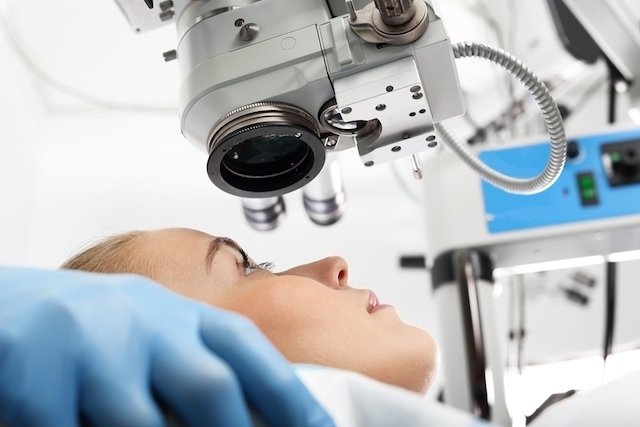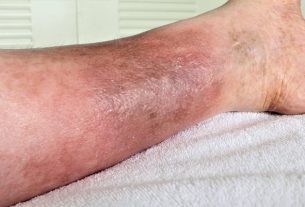Myopia surgery is normally performed on people with stabilized myopia and who do not have other more serious eye problems, such as cataracts, glaucoma or dry eye, for example. Therefore, the best candidates for this type of surgery are generally young adults over the age of 18.
Although there are different surgical techniques, the most used is laser surgery, also known as Lasik, in which a ray of light is used to correct the cornea, which can be used to permanently cure myopia of up to 10 degrees. In addition to correcting myopia, this surgery can also correct up to 4 degrees of astigmatism. Understand more about lasik surgery and the necessary recovery care.
This surgery can be performed free of charge by the SUS, but is normally reserved only for very high-grade cases that make daily activities difficult, and is not covered in the case of purely aesthetic changes. However, the surgery can be performed in private clinics with prices ranging from 1,200 to 4,000 reais.

How is the surgery done
There are several different techniques for performing myopia surgery:
- Lasik: is the most used type, as it corrects various types of vision problems. In this surgery, the doctor makes a small cut in the membrane of the eye and then uses a laser to definitively correct the cornea, allowing the image to be formed in the correct location of the eye;
- PRK: using a laser is similar to Lasik, however, in this technique the doctor does not need to cut the eye, being more suitable for those who have a very thin cornea and cannot perform Lasik, for example;
- Contact lens implantation: It is used especially in cases of very high myopia. In this technique, the ophthalmologist places a permanent lens in the eye, usually between the cornea and the iris to correct the image;
During surgery, anesthetic eye drops are placed on the eye, so that the ophthalmologist can move the eye without causing discomfort. Most surgeries last around 10 to 20 minutes per eye, but in the case of lens implantation in the eye it can take longer.
As your vision is affected due to the inflammation of the eye and the anesthetic eye drops, it is advisable to take someone else with you so that you can return home safely afterwards.
What is recovery like?
Recovery from myopia surgery lasts on average around 2 weeks, but it may depend on the degree of myopia you had, the type of surgery used and the body’s healing capacity.
During recovery it is usually advised to take some precautions such as:
- Avoid scratching your eyes;
- Apply antibiotic and anti-inflammatory eye drops recommended by the ophthalmologist;
- Avoid impact sports, such as football, tennis or basketball, for 30 days.
After surgery, it is normal for vision to still be blurred due to inflammation of the eye, however, as time passes, vision becomes clearer. Furthermore, it is common for burning and constant itching in the eyes to appear in the first few days after surgery.
Possible risks of surgery
Risks of surgery for myopia may include:
- Dry eye;
- Sensitivity to light;
- Eye infection;
- Increased degree of myopia.
The risks of surgery for myopia are rare and occur less and less, due to advances in the techniques used.

Sign up for our newsletter and stay up to date with exclusive news
that can transform your routine!
Warning: Undefined array key "title" in /home/storelat/public_html/wp-content/plugins/link-whisper-premium/templates/frontend/related-posts.php on line 12
Warning: Undefined array key "title_tag" in /home/storelat/public_html/wp-content/plugins/link-whisper-premium/templates/frontend/related-posts.php on line 13



